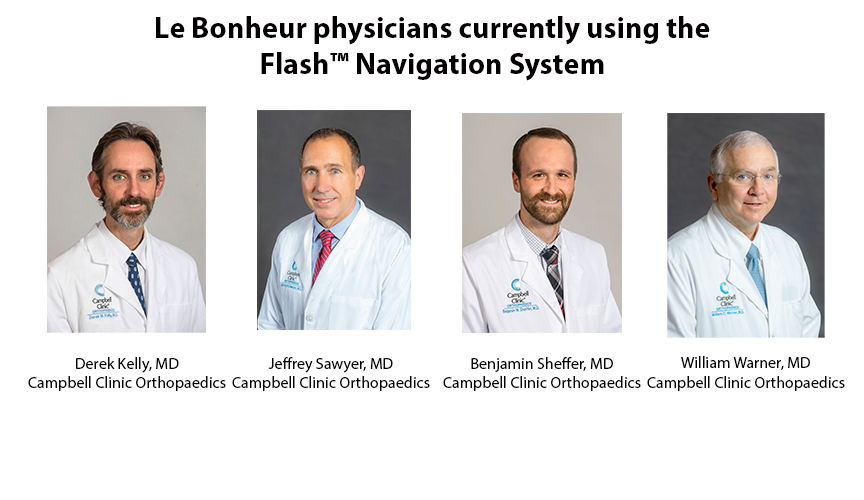In a Flash
Thirty minutes waiting for technology to map the spine used to be the norm for Orthopaedic Surgeon Derek Kelly, MD, when prepping for spinal surgeries that required navigation assistance. And the use of fluoroscopy, an imaging technique that uses frequent X-ray, meant he and his staff were exposed to radiation in the operating room (OR) throughout the surgery.
But all of this changed when Le Bonheur Children’s became one of the first pediatric centers in the country to install a new spine navigation system — SeaSpine’s Flash™ Navigation System with 7D technology.

“With the new navigation system, we can be safer, the patient and staff are exposed to less radiation in the OR and we have more confidence in our screw and instrument placement thanks to the 7D technology,” said Kelly. “As one of the first pediatric centers to have this technology, we’re excited to have another tool for our spine program and another option for complex cases.”
The Flash™ Navigation System 7D technology uses machine-vision cameras and advanced algorithms for navigation during surgery — similar to the technology found in self-driving cars. During surgery, special cameras analyze the surface of the spine using only visible light. Using a preoperative CT scan as reference, the navigation system then recognizes tracked instruments in relation to the spine. The advanced cameras and algorithms recreate a 3D image for real-time surgical navigation in seconds.
These special cameras replace the standard imaging technique of fluoroscopy, which meant constant exposure to radiation for the patient and the staff during the surgery. In addition to reduced radiation, lack of fluoroscopy reduces costs associated with personnel needed for fluoroscopy and offers a much quicker imaging process than intraoperative CT.
The Flash™ Navigation System creates an image for surgical navigation in the following steps:
- Patient has a preoperative CT scan that is loaded into the navigation system.
- The orthopaedic surgeon begins incisions. Once the spine is visible, special cameras take a photo using only visible light. This creates a full-color, 3D image reconstruction with nearly 1,000,000 data points for surgical navigation.
- This photo is mapped to the preoperative CT scan in less than 30 seconds.
- A reference array is attached to the spine in order to navigate where instruments are in space, based on the CT scan and photo, allowing for more confidence in accuracy of screw and instrument placement.
This technology can currently be used for any open spine case with the hope that its uses will expand in the near future.
“Excellent surgical navigation takes radiation or takes time. The 7D system provides the balance between the two, and we can even now do two cases in the same day,” said Orthopaedic Surgeon Jeffrey Sawyer, MD. “With the new navigation, we can plan the surgery more beforehand and be more efficient. As a surgeon, I feel a bit more relaxed and confident of where I’m placing screws.”

Benefits of the Flash™ Navigation System
- Improved efficiency throughout key portions of the case
- Radiation-free, using only visible light for intraoperative imaging
- Ability to complete more than one navigation case per day
- Cost efficient, reducing the need for radiology and associated personnel
- Highly accurate with more than 1,000,000 data points
Help us provide the best care for kids.
Le Bonheur Children's Hospital depends on the generosity of friends like you to help us serve 250,000 children each year, regardless of their family’s ability to pay. Every gift helps us improve the lives of children.
Donate Now
















